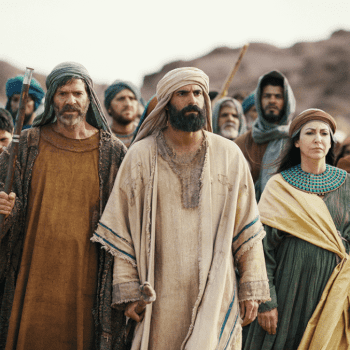The election of Barack Obama to the presidency of the United States brought questions about race in America to the forefront of political and social discourse in novel ways. It also gave rise to the claim that America had entered a post-racial era. What people mean when they invoke post-racial is often unclear, however. And is achieving a post-racial nation even possible or desirable? Most often, media figures have deployed the term to indicate that Obama the candidate and president deemphasizes the divisive history of race in America in favor of universal histories and experiences that unite.
Indeed, in his address at the 2004 Democratic National Convention, then-Senator Obama himself laid the political and emotional groundwork for this version of the post-racial ideal in asserting that, “There’s not a black America and white America and Latino America and Asian America; there’s the United States of America.” During the 2008 Democratic primary, when video clips of sermons by his pastor, Jeremiah Wright, were decontextualized to emphasize black rage and political disloyalty, Obama delivered his landmark speech on race and politics. He condemned Wright’s comments for expressing “a profoundly distorted view of this country—a view that sees white racism as endemic, and that elevates what is wrong with America above all that we know is right with America.” In that speech, titled “A More Perfect Union,” Obama called on Americans to move past the “racial stalemate we’ve been stuck in for years” and “asserted a firm conviction—a conviction rooted in my faith in God and my faith in the American people—that working together we can move beyond some of our old racial wounds.” Even though he made clear that he was not so naïve as to imagine that racial divisions could be overcome quickly or easily, he continued to press Americans to focus on what unites them rather than divides. “Mr. Obama now presides over a White House that constantly projects cross-racial unity,” Jodi Kantor wrote in Sunday’s New York Times. “When discussing in interviews what image the Obamas want to project, aides use one word more than any other: ‘inclusive.’”
In this view, post-racial means that American social and political life has become race-neutral and that, except for those on the fringes, Americans have rejected the overt practices of racial discrimination and hierarchy that have marked most of the nation’s history. Significantly, of course, this approach to post-racialism also calls on those peoples who have been subjected to such discrimination to themselves become race-neutral, refrain from appealing to the history of racism, and invest their hopes in the possibility of a “colorblind” nation. Indeed, the negative response by many of the president’s critics to his comments on the killing of African American teenager Trayvon Martin earlier this year highlights the complicated position in which the president finds himself with regard to public discourse about race. “If I had a son, he’d look like Trayvon,” Obama noted. And although the majority of his remarks focused on Martin’s grieving family and the investigation, political figures like Newt Gingrich and columnists such as Michelle Malkin criticized Obama for invoking race at all, with the former calling his comments “disgraceful” and the latter, “political opportunism.”
Read the rest here















